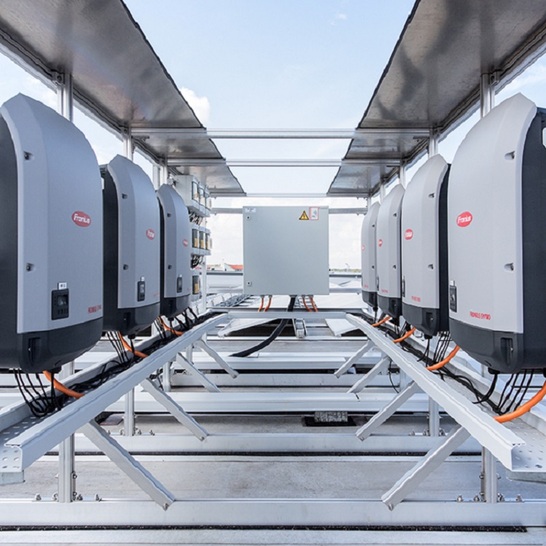A PV project always starts with system design. During this process, the planner takes a series of technical decisions, both general and relating specifically to the system components. CAPEX (capital expenditure) plays a key role here. CAPEX for a PV system includes the costs for inverters, PV modules, labour and BOS (Balance of System) costs etc. Here, the inverter usually makes up less than 10% of the CAPEX, but, nonetheless, does have a significant influence on the operating costs and the ROI of the PV system.
This is also evident in the present case, where it shows that the Fronius Eco 27.0 (27 kW), compared with a competitor’s 60kW device, can achieve a cost advantage of up to 62% in some aspects of BOS costs. The saving is the result of differences in cabling design and the components required for the AC and DC distribution. The Fronius Eco does exceed the 60 kW unit in a cent-per-watt comparison, however, the saving in the overall system costs that can be realized through reducing BOS costs make the Eco the more cost effective choice.
The Eco also comes out on top in terms of the OPEX costs (operational expenditure). Among other things, this is attributed to its active cooling technology. Compare the Eco to passively cooled devices that need to have the cooling element cleaned at least twice a year (if this is not done, owners risk invalidating their warranty). For the Fronius Eco, just one maintenance is recommended once a year. This is an important factor given the costs of servicing.
Ultimately, the expected energy yield is an important factor and the Eco doesn’t fail to impress here either! According to the yield forecast, over the course of 15 years in a 400 kW system, the Eco generates up to EUR 41,000 more yield than a competitor’s passively cooled 33 kW device subject to the same monitoring. In this case, the additional yield is attributed to the Fronius Eco’s considerably superior power derating behaviour in summer temperatures.
This clearly shows that bigger is not automatically better, and is often more expensive. System planners that - instead of focusing on the inverter price only - take into account CAPEX, OPEX and energy yield can significantly increase the system’s ROI.


